- News
- Reviews
- Bikes
- Accessories
- Accessories - misc
- Computer mounts
- Bags
- Bar ends
- Bike bags & cases
- Bottle cages
- Bottles
- Cameras
- Car racks
- Child seats
- Computers
- Glasses
- GPS units
- Helmets
- Lights - front
- Lights - rear
- Lights - sets
- Locks
- Mirrors
- Mudguards
- Racks
- Pumps & CO2 inflators
- Puncture kits
- Reflectives
- Smart watches
- Stands and racks
- Trailers
- Clothing
- Components
- Bar tape & grips
- Bottom brackets
- Brake & gear cables
- Brake & STI levers
- Brake pads & spares
- Brakes
- Cassettes & freewheels
- Chains
- Chainsets & chainrings
- Derailleurs - front
- Derailleurs - rear
- Forks
- Gear levers & shifters
- Groupsets
- Handlebars & extensions
- Headsets
- Hubs
- Inner tubes
- Pedals
- Quick releases & skewers
- Saddles
- Seatposts
- Stems
- Wheels
- Tyres
- Health, fitness and nutrition
- Tools and workshop
- Miscellaneous
- Cross country mountain bikes
- Tubeless valves
- Buyers Guides
- Features
- Forum
- Recommends
- Podcast
review
£2,199.00
VERDICT:
Solid, stable and comfortable bike with a decent Campag spec, although it's capable rather than remarkable on the climbs
Weight:
7,960g
Contact:
At road.cc every product is thoroughly tested for as long as it takes to get a proper insight into how well it works. Our reviewers are experienced cyclists that we trust to be objective. While we strive to ensure that opinions expressed are backed up by facts, reviews are by their nature an informed opinion, not a definitive verdict. We don't intentionally try to break anything (except locks) but we do try to look for weak points in any design. The overall score is not just an average of the other scores: it reflects both a product's function and value – with value determined by how a product compares with items of similar spec, quality, and price.
What the road.cc scores meanGood scores are more common than bad, because fortunately good products are more common than bad.
- Exceptional
- Excellent
- Very Good
- Good
- Quite good
- Average
- Not so good
- Poor
- Bad
- Appalling
Hailing from Montreal, Canada, Argon 18 might not have the biggest profile in the UK but the brand has a growing reputation for producing high-quality frames. The Krypton, the third tier road frame in the range, has been redesigned for 2011 with an updated frame shape and a new grade of carbon fibre. Our test model is built up with a Campagnolo Centaur groupset and Fulcrum Racing 5 wheels.
Frame

Argon 18 have given the Krypton a major overhaul for 2011 and now produce it out of the same mould as last year's Gallium model - although it's a different grade of carbon (more on that later). The Gallium is the next-level-up frame in the Argon 18 range, and it too gets a new mould this year. The biggest change to the Krypton is the inclusion of the 3D head tube.
What's the 3D head tube? Right, when you want to set the handlebar height on most bikes you alter the size and/or number of spacers between the upper headset bearing and the stem, correct? You can take out a spacer and chop the steerer tube down for a lower front end. Sure, you can flip your stem or swap to a new one if you like, but the only way to change the position of the stem is to mess with the headset spacers. Okay...
The 3D head tube, which is exclusive to Argon 18, is different. The Krypton, like the higher level road bikes in the Argon 18 range, comes with oversized spacers - with a 52mm outer diameter, the same as the head tube - that are screwed into place on top of the head tube with a lockring collar. You fit the upper headset bearing on top. Argon 18 reckon the system gives you 'a structural extension of the head tube'; rather than adding spacers on to the fork steerer, you're effectively extending the height of the head tube. You get three different height settings with these oversized spacers: 0, 10 and 20mm. You can fit headset spacers on the fork's steerer tube in the usual way if you want more height than this.
What's the point? Argon 18 say the 3D setup is 5% stiffer than using headset spacers for a 10mm rise, and 11% stiffer for 20mm - so you don't introduce as much flex as usual if you go for a more upright ride position.
'Ah,' you say, 'but if you want a higher front end and don't want to sacrifice steering accuracy, why not go for a frame with a longer head tube in the first place?' Fair point; glad you're paying attention. You could do that, but the 3D system does have the advantage of allowing you to alter things over time. Say you're new to road bikes and aren't yet confident riding in a low, head-down position. You could have the front end high to begin with and lower it later on. Or, say you usually ride in a low and efficient position but you're about to take on a long and hilly sportive: you can raise the front end up.
So, there you go... the 3D head tube. It's on this year's Krypton.
The rest of the frame might not be quite as unusual but it's still distinctive. Argon 18 build their frames according to - TLA coming up - their HDS philosophy. HDS stands for Horizontal Dual System. It's not exactly self-explanatory. The idea is that it addresses the jobs the different elements of the frame are intended to do.
Argon 18 draw a diagonal line (figuratively!) from the top of the head tube down to the rear dropouts. Everything below the line - the down tube, the head tube, the chainstays, the bottom bracket area - is designed to be as rigid as possible crossways (i.e. 'laterally stiff') to transmit your power to the rear wheel with maximum efficiency. Everything north of the line - the top tube and seatstays - is designed to be a little yielding (i.e. 'vertically compliant') to dampen vibration from the road surface.
With that in mind, the top tube is way wider than it is tall. Argon 18 vary the tube profiles and wall thicknesses between different sizes to keep the ride character the same no matter whether you're on an XS or an XL, but on our large test model that top tube is never more than 29mm tall although it's as wide as 51mm. That's so broad that I was a little concerned it would get in the way as I pedalled, but it never did (if you're a little knock kneed or tend to brush your knees against the top tube on a regular basis, you might want to check that). The idea is that it can move up and down just a tiny amount.
The arcing seatstays, which continue straight out of the top tube, are designed to do a similar job. They're not as skinny as some but the tube walls are pretty thin back here.
Moving below the line - that figurative one - to the laterally stiff stuff... the down tube is a whopper. It's pretty much triangular in profile, starting out as wide as the top tube and extending progressively outward along its length to reach across the full width of the bottom bracket.
The bottom bracket itself is of the screw-in, outboard type rather than BB30 but it lives in a big old piece of real estate. There's enough carbon fibre down there to... oh, you know, make loads of carbon fibre stuff out of, and the chainstays start out as the deepest in the known universe before tapering off towards the rear dropouts.
Like lots of other manufacturers these days, Argon 18 use an oversized headset although the configuration is quite unusual, the fork spinning on 1 1/4in bearings top and bottom. That fork is a straight-legged monocoque made from the same 5650 carbon fibre as the frame.
This is an upgrade over the carbon used for the Krypton last year (although it's not as high a grade as the carbon used for either the Gallium Pro or the Gallium). Along with the changes to the design, Argon 18 reckon this results in significant improvements to the Krypton's stiffness-to-weight ratio: 9% higher at the head tube, 45% better at the fork, and 36% better at the chainstays.
As I mentioned, we've got the large version of the frame here that equates to 57-59cm in a classic geometry (i.e. if you take a 57, 58 or 59 usually, this is the size for you). It has a slightly sloping top tube and a head tube that measures 17.3cm, which is pretty short on a bike of this size. Don't forget, though, you've got that 3D system to play with if you want to jack it up a bit. The frame is built with a 73 seat angle and a head angle that, at 72.7, is just a touch slacker than normal... Not that you'd notice in use.
You can buy the Krypton as a frameset, and build it up yourself. Do that and as well as the frame and fork you get an FSA headset and Argon 18's ASP 1500 carbon seatpost. That seatpost is 31.6mm diameter and 300mm long. With a meaty clamp on top, it weighs in at a pretty hefty 282g. That little lot will set you back £1,225.52. Oh, and you can choose between white and red colour options. It's cool to have the choice but the correct answer, of course, is white.
Kit
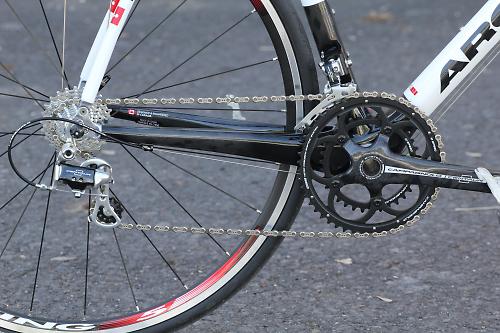
We went for a complete bike, though. Through their usual stockists, Argon 18's UK distributor i-ride.co.uk are currently offering the Krypton with a Campagnolo Centaur groupset and Fulcrum Racing 5 wheels for £2,199. The same bike but with an alloy chainset rather than a carbon one and with Fulcrum Racing 7 wheels is £1,999.
Centaur is one tier above Campag's entry-level Veloce groupset. It's 10-speed whereas all the higher groupsets from the Italian marque are 11-speed. But in terms of function it's a similar proposition. You shift down (up the block) a maximum of three sprockets at once by sweeping the finger lever across, and you shift up (down the block) with the little thumb button that sits on the inside edge of the lever body. Centaur allows you to move only one sprocket down with every push, but giving the button a couple of jabs is simple enough if you need to turn a bigger gear in a hurry. It's available with a standard chainset but we have a compact here matched to an 11-25T cassette. All of the cabling here is external, by the way.
Racing 5s are among the cheaper wheels from Fulcrum (who are actually Campagnolo with a false moustache stuck on). These aren't the lightest wheels out there (the published weights are 775g and 985g plus quick releases) but the quality is good for the cash (£234.88 if you bought them separately). The bearings are reasonable and the eyeleted rims can stand up to everyday/training use and abuse.
The only thing I don't like about these wheels - and it's a small point, I admit - is that all the spokes are black and bladed... apart from two on each wheel that are silver and round. Campagnolo Fulcrum do this for 'dynamic balance' - to balance out the rim joint material opposite. Fair enough, but it just looks like you've bust a spoke and couldn't be arsed to source the right replacement.
3T provide the aluminium cockpit - an ARX-Pro stem and a triple-bulled Ergosum Pro handlebar with a shallow (128mm) drop. The saddle is a Prologo Nago Pro T 2.0 and the tyres are Continental Grand Prix, 700 x 24C - they don't come in 23mm.
Right, that's yer lot on the kit front, let's get out on the road.
Ride

Argon 18 have aimed for frame stiffness here and that's what they've got. This is a beefy frame that provides a solid foundation for laying down the power.
I'm just back from doing a sprint repeats session, for example: 30secs max in a big gear, the first 15secs standing, the second 15secs seated. No finesse, just power. The Krypton didn't mind one bit, staying perfectly straight throughout and surging forward as soon as I upped the intensity each time.
Jump hard on the pedals and the bottom bracket stays firm. It really is clamped rigidly in place by the muscular tubes that radiate out from it. Sling the bike in the highest gear and swing off the cranks and the BB area doesn't budge, capably transferring all that force into forward speed.
Get your weight forward and the fork is sure and steady too. Maybe, since I had the complete stack of spacers on, that 3D head tube is coming into play here? It's impossible to say for sure. What's certain is that I couldn't get the front end to flex to an appreciable degree even when leaning the bike over a ridiculous amount in a deliberate limit-finding ploy.
That makes for predictable cornering. Not predictable in the sense of being boring, but in that you won't be surprised by the handling when you slam the Krypton into a downhill bend as fast and as leant-over as you can manage. You end up where you point it, not just somewhere with the same postcode, and the fork doesn't bottle it under hard braking either. This is actually a really solid descender that maintains firm contact with the road, even over the rough sections, which is good for your confidence.
The Fulcrum Racing 5 wheels add to that feel. They're not world beaters in terms of their rigidity - they're not up there with something like the (much more expensive) Mavic R-Sys - but you can't push them around and kick sand in their face either. I certainly didn't get any brake rub at either the front or the rear with these despite laying down all my usual wheel bending efforts.
As for comfort, you might think it would be harsh but it's not. It's actually very well damped. It's far from being one of those bikes that makes you think about getting off as soon as you've got on.
Well, I say that, but I really couldn't get on with the Prologo Nago saddle. I tried to love it. I altered its angle and everything, but it just wasn't happening between us. There's a fair amount of flex in the shell and there's gel under that cover, but I just wanted a touch more cushioning on the nose.
That aside, I found the Krypton comfortable enough. It doesn't feel the need to pass on the news every single time it encounters a slight imperfection in the road surface and, as I've explained, you get a good amount of scope for tuning the fit courtesy of the famous 3D head tube. I find Campag's silicone hoods really good at reducing vibration and hand fatigue too, and the low-drop bars put slightly less strain on your back than usual when you get your hands down on the bottom section. They've got a good, long rearward extension on the drops too. A low-bar isn't just a design for the middle aged, by the way; plenty of those whippersnappers in the pro peloton like this kind of setup too.
The Krypton is a reasonable weight rather than exceptionally light, coming in at 7.96kg (17.5lb). For comparison, the
The compact chainset gives you a range of gears that'll allow you to spin up most climbs without your quads going pop. The 34T inner ring matched up to a 25 at the rear might not shift you too far forward with every turn of the cranks but it'll get you there in the end. If you want a smaller gear than that, Campag don't do a Centaur cassette with a 27T sprocket but 13-26T and 13-29T are options.
Verdict
Solid, stable and comfortable bike with a decent Campag spec, although it's capable rather than remarkable on the climbs
road.cc test report
Make and model: Argon 18 Krypton
Size tested: 57-59cm, white
About the bike
State the frame and fork material and method of construction. List the components used to build up the bike.
Frame 5650 carbon fibre monocoque
Fork Kr36 specific monocoque 5650 carbon fork
Groupset Campagnolo Centaur 10-speed
Wheels Fulcrum Racing 5
Tyres Continental Grand Prix 700 x 24c
Seatpost Argon 18 ASP 1500 carbon
Saddle Prologo Nago Pro T 2.0
Handlebar 3T Ergosum Pro triple-bulled alloy
Stem 3T ARX-Pro alloy
Tell us what the bike is for, and who it's aimed at. What do the manufacturers say about it? How does that compare to your own feelings about the bike?
Argon 18 say, "The Krypton has been revised with one thing in mind: to let riders make the most of their potential. This latest Krypton benefits from an added measure of efficiency, with an extra 17% rigidity where it counts as well as a newly-designed fork that matches the new frame's performance criteria. Your highest expectations will be met."
In this build, it's probably best seen as an all-round road bike: fast rides, sportives, general road use.
Frame and fork
Overall rating for frame and fork
8/10
Tell us about the build quality and finish of the frame and fork?
Well-made, great finish
Tell us about the materials used in the frame and fork?
Argon 18 describe the carbon as 5650 high modulus. It's their own blend.
Tell us about the geometry of the frame and fork?
I had a size large. Argon 18 reckon this is the one for you if you usually take a 57-59cm frame. The seat angle is 73 and the head angle is 72.7.
The most notable feature of the geometry is the adjustability of the 3D head tube. See the main text for all the details on that.
How was the bike in terms of height and reach? How did it compare to other bikes of the same stated size?
It's a unique sizing arrangement with that adjustable head tube. The seat tube and top tube are both 57.5cm which is about normal.
Riding the bike
Was the bike comfortable to ride? Tell us how you felt about the ride quality.
Yes, pretty comfy, although I didn't get on at all well with the saddle. That aside, not at all harsh.
Did the bike feel stiff in the right places? Did any part of the bike feel too stiff or too flexible?
The frame is stiff at both the front end and through the centre/back.
How did the bike transfer power? Did it feel efficient?
Yes, certainly efficient.
Was there any toe-clip overlap with the front wheel? If so, was it a problem?
None
How would you describe the steering? Was it lively, neutral or unresponsive? Middling
Tell us some more about the handling. How did the bike feel overall? Did it do particular things well or badly?
It tracks well, is nicely planted and predictable. A notably solid descender
Which components had the most effect (good or bad) on the bike's comfort? would you recommend any changes?
I couldn't get along with the saddle at all. I find the Campag levers particularly comfortable, though. 24C tyres add a slightly larger air chamber over the usual 23s although I can't say they made any difference to comfort.
Which components had the most effect (good or bad) on the bike's stiffness? would you recommend any changes?
The Fulcrum Racing 5 wheels are a fairly lowly level although I didn't notice any less stiffness than more expensive models in the range - they're just not as high-quality and weigh a bit more.
Rate the bike for efficiency of power transfer:
9/10
Rate the bike for acceleration:
8/10
Very stiff, although a pound or two lighter would make a difference
Rate the bike for sprinting:
8/10
Rate the bike for high speed stability:
8/10
Rate the bike for cruising speed stability:
8/10
Rate the bike for low speed stability:
8/10
Rate the bike for flat cornering:
8/10
Rate the bike for cornering on descents:
8/10
Rate the bike for climbing:
7/10
The drivetrain
Rate the drivetrain for performance:
7/10
Solid, reliable - does the job well
Rate the drivetrain for durability:
7/10
Rate the drivetrain for weight:
7/10
Rate the drivetrain for value:
7/10
Wheels and tyres
Rate the wheels and tyres for performance:
7/10
Rate the wheels and tyres for durability:
7/10
Rate the wheels and tyres for weight:
7/10
Rate the wheels and tyres for comfort:
7/10
Rate the wheels and tyres for value:
7/10
Controls
Rate the controls for performance:
7/10
Rate the controls for durability:
7/10
Rate the controls for weight:
7/10
Rate the controls for comfort:
9/10
Rate the controls for value:
7/10
Your summary
Did you enjoy riding the bike? Yes, definitely enjoyed it
Would you consider buying the bike? Not sure it does enough to grab me
Would you recommend the bike to a friend? For larger riders wanting good stiffness and solidity
Rate the bike overall for performance:
7/10
Rate the bike overall for value:
8/10
Anything further to say about the bike in conclusion?
It's a bike that's best suited to larger/powerful riders needing plenty of frame stiffness.
About the tester
Age: 40 Height: 190cm Weight: 74kg
I usually ride: My best bike is:
I've been riding for: Over 20 years I ride: Most days I would class myself as: Expert
I regularly do the following types of riding: time trialling, commuting, sportives, general fitness riding,
Mat has been in cycling media since 1996, on titles including BikeRadar, Total Bike, Total Mountain Bike, What Mountain Bike and Mountain Biking UK, and he has been editor of 220 Triathlon and Cycling Plus. Mat has been road.cc technical editor for over a decade, testing bikes, fettling the latest kit, and trying out the most up-to-the-minute clothing. He has won his category in Ironman UK 70.3 and finished on the podium in both marathons he has run. Mat is a Cambridge graduate who did a post-grad in magazine journalism, and he is a winner of the Cycling Media Award for Specialist Online Writer. Now over 50, he's riding road and gravel bikes most days for fun and fitness rather than training for competitions.

































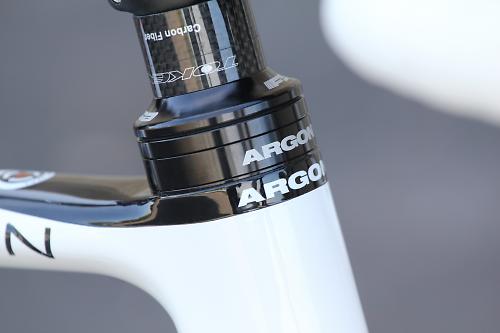
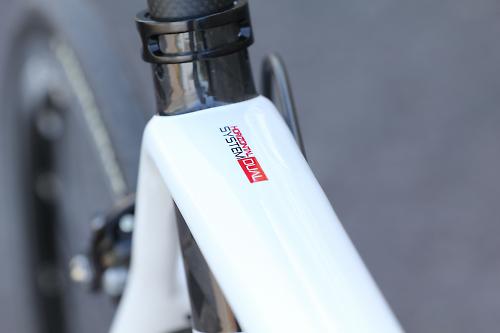






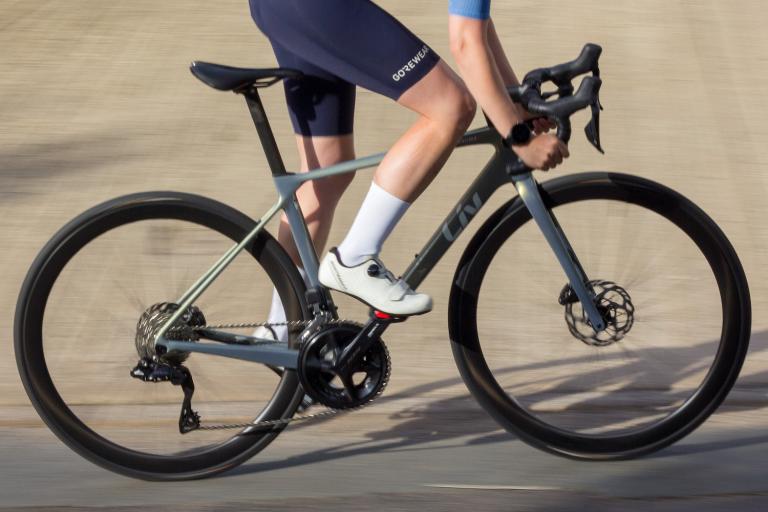
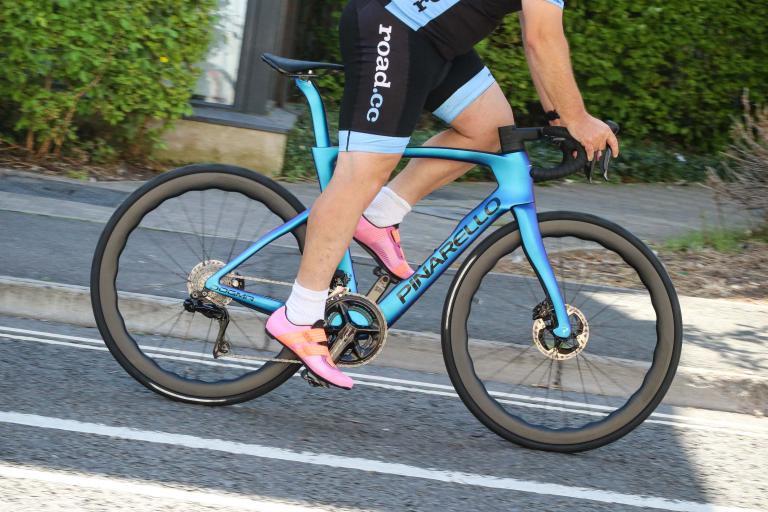
Oh dear even your staff & copy checkers can't even use the right terminology...
Nokons on two of mine, longitudinal XTR on the other.
Excellent, Lancashire Road Police! I and many others are pleased that some Police Services are stressing this point. Language is important:...
This is exactly the sort of thing AI enables them to do. Previously it was thought impossible to do something like "if user is travelling for 3...
No, just to expensive, I went Jonas and Demi as the expensive picks....
[Snip]...
Well, Edinburgh certainly has hills, there's quite a bit of pavé and Arthur's seat is regularly motor-traffic-free anyway, so that would work. ...
It was never the same after David Duffield left. With no more "Turn your granny to the wall" it felt too professional. And in the era of big...
I think there could be a whole other thread there... per your post on the funnies of the US vs. Switzerland. (Or possibly a report to government...
Now where's the fun in being logical?...